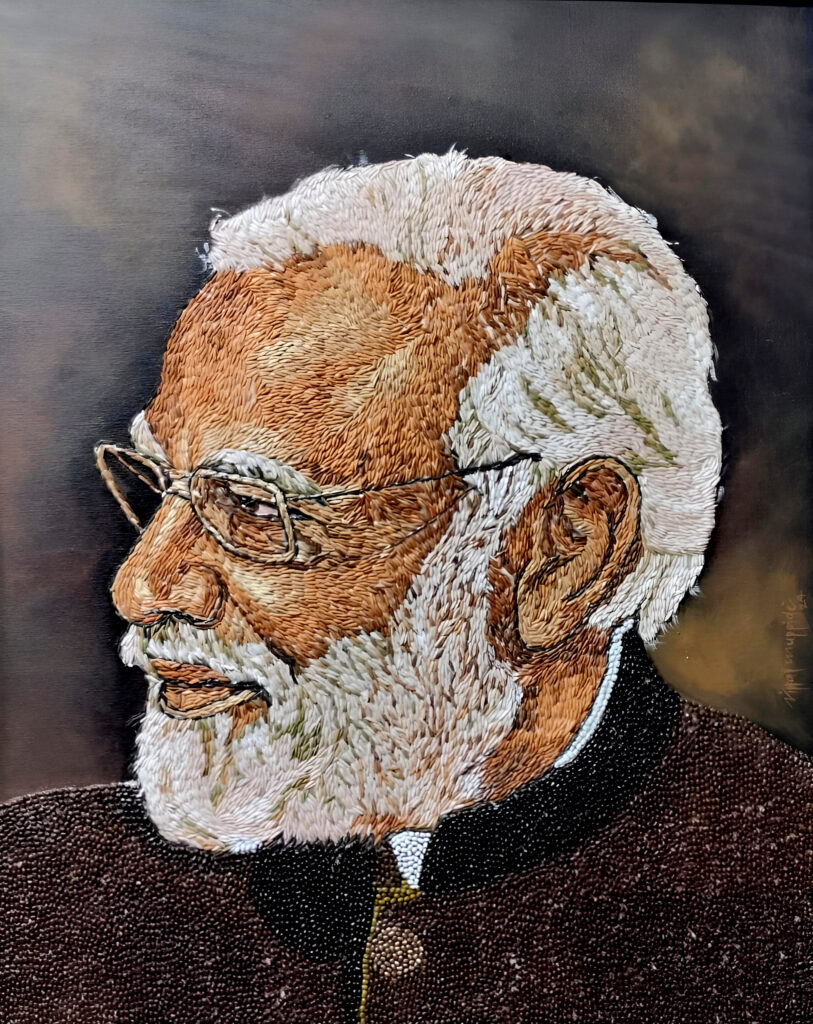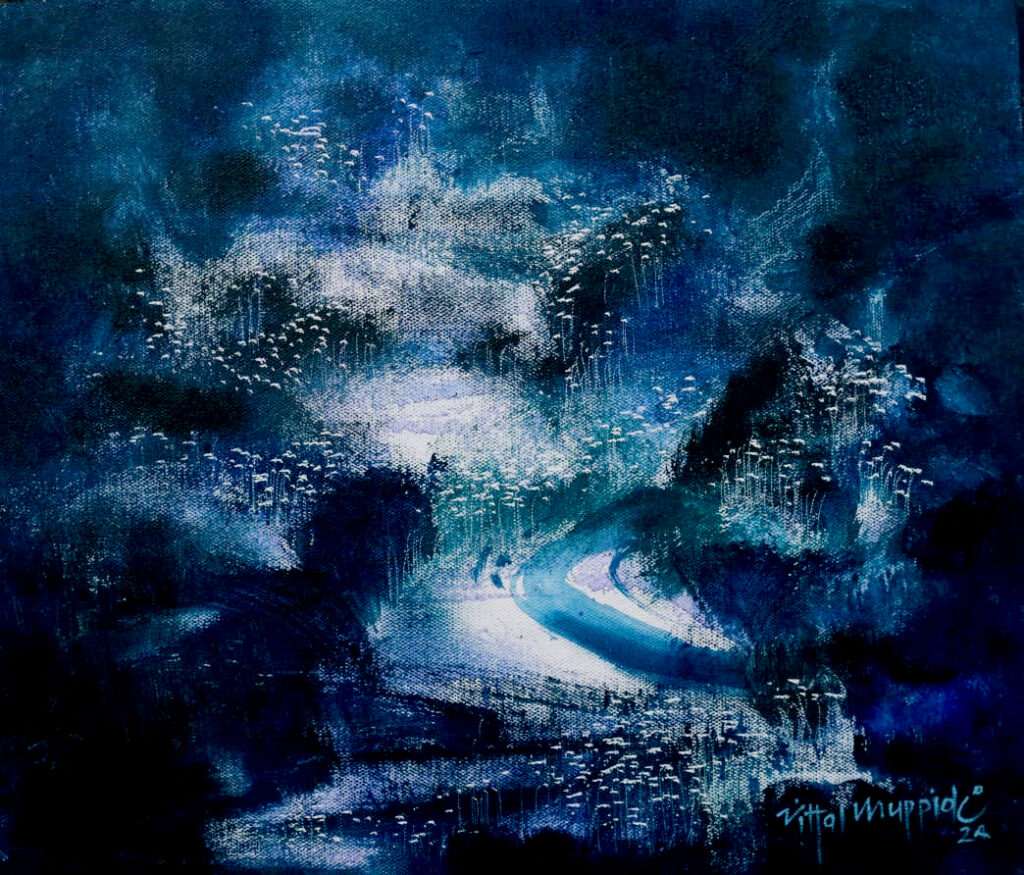Journey of Art Rooted in the Soil of Telangana


Muppidy Vittal’s journey as an artist began in the quiet village of Tadkal, nestled in the Sangareddy district of Telangana. Surrounded by vast stretches of farmland and the dry, rugged beauty of the land, Vittal grew up with an intimate connection to the earth. It wasn’t just his livelihood but his muse, inspiring the abstract landscapes he would one day be known for. The colors of his art—earthy browns, muted greens, and subtle shades of grey—mirrored the tones of his village, where water was scarce and the land itself seemed to hold a story of struggle and survival.
For nearly three decades, Vittal poured this connection into his paintings. His signature style was deeply rooted in his experience as a farmer. The rough textures and layers of his works reflected the fields he had worked, the soil he had tilled, and the sky he had looked up to during years of farming. It was as if every brushstroke carried the weight of his rural upbringing, each canvas a reflection of the quiet strength he drew from the land.
But Vittal’s journey wasn’t confined to the canvas. His life took a surprising turn when a corporate seed company approached him with an unusual request. They wanted him to create a special painting for one of their senior officers, something that would leave a lasting impression. Vittal, always seeking to infuse his art with meaning, asked about their work. When they explained that they sold seeds, a spark ignited in Vittal’s mind.
He decided to create a portrait—using seeds. The idea felt natural, almost inevitable, for a farmer-turned-artist like Vittal. Seeds represented life, growth, and the very foundation of the land he had known since childhood. He carefully selected paddy, black gram, green gram, red gram, soybeans, and cotton seeds, using them to bring the portrait to life. The process was intricate and time-consuming, requiring fifteen days of meticulous work. Vittal sketched the outline, applied adhesive, and then, seed by seed, built the portrait, matching the colors and textures to the skin tones and features of the person he was portraying.
The result was a stunning, unique piece of art that left the company amazed. Vittal had not just created a portrait; he had transformed an everyday agricultural product into a medium of artistic expression. This success opened a new chapter in his life—he was no longer just a landscape artist but a seed artist as well.
Soon after, Vittal received another commission from the same company, this time to create a portrait of the renowned cricket commentator, Harsha Bhogle. The portrait was to be presented to Bhogle during a special event, and when the commentator saw it, he was visibly moved. The emotional response validated Vittal’s new path, cementing his reputation as a unique artist with a powerful connection to his roots.
As word of his seed art spread, Vittal was approached by Rakesh Chandra Aggarwal, the director general of agriculture. Impressed by his work, Aggarwal commissioned Vittal to create a portrait for the then Minister of Agriculture, Radha Mohan Singh. Once again, Vittal’s seed art captured attention and admiration, further solidifying his status in both the artistic and agricultural communities.
But Vittal had a larger dream. He wanted to present a seed portrait to Prime Minister Narendra Modi, a leader who had initiated several farmer-friendly programs. In 2019, during the launch of the “Kisan Samman Nidhi” program in Gorakhpur, Uttar Pradesh, Vittal finally got his chance. Due to tight security, he couldn’t hand the painting to the Prime Minister himself, but the portrait was presented on his behalf by the Agriculture Minister.
Vittal continued to work tirelessly, and eventually, his perseverance paid off. He was invited to personally present a portrait to Prime Minister Modi at the Lal Bahadur Shastri Stadium in Hyderabad. This time, there were no barriers between the artist and his subject. As Modi examined the intricate details of the portrait, made entirely from seeds, he asked Vittal about the types of seeds used and the time it had taken to complete the piece. For Vittal, this conversation was more than just an acknowledgment of his art; it was the culmination of a lifelong journey that blended his identity as both a farmer and an artist.
While Vittal remains best known for his abstract landscape paintings, it is his seed portraits that have earned him a unique place in the artistic world. Today, Muppidy Vittal continues to create his unique seed portraits, each one a reflection of his unwavering dedication to his craft and his roots. His work stands as a powerful reminder of the ways in which art and agriculture can intersect, creating something truly extraordinary.











